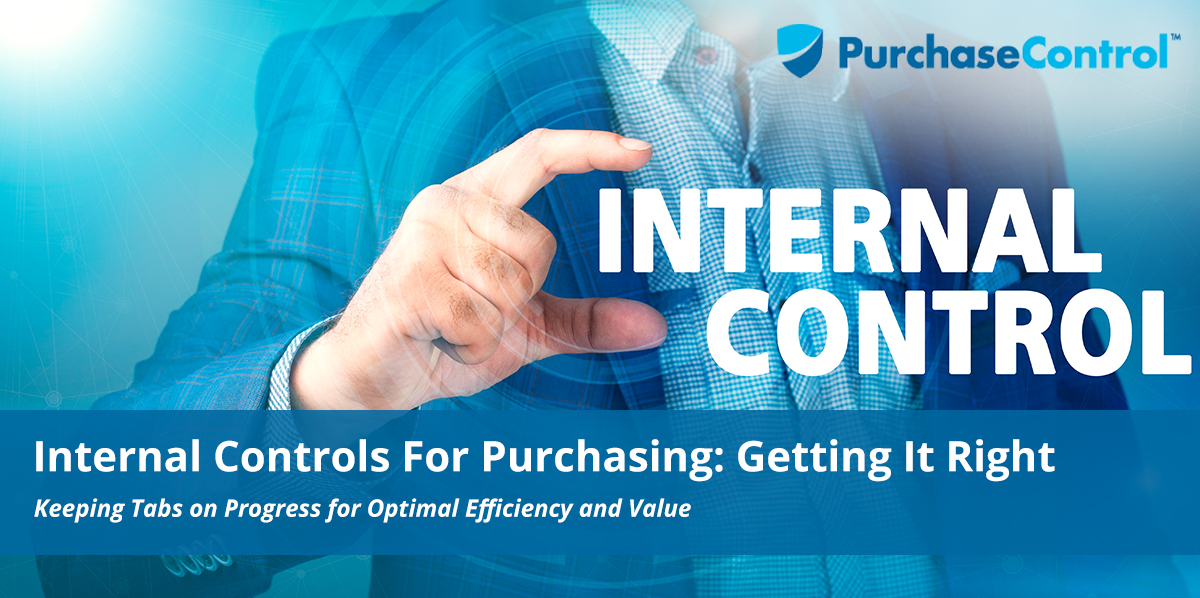For organizations of all sizes, part of building and maintaining a successful business is developing and consistently applying internal controls. This is especially important for business critical functions like purchasing, where waste, needless expense, and dangerous levels of risk exposure can result without them.
Creating and implementing effective purchasing internal controls doesn’t have to be difficult, however. By following a few straightforward best practices, you can ensure your workflows are secure and well-optimized while leaving enough flexibility to ensure smooth operations and reactive flexibility in uncertain times.
Why Purchasing Internal Controls Matter
Mitigating risk exposure, waste, and financial loss are the three primary drivers for developing purchasing internal controls. Like accounts payable internal controls, you can think of the controls you create for your purchasing department as more of a risk management system, complete with contingencies, than a hard and fast set of unyielding rules. Baking some flexibility into the process ensures you’re not sacrificing competitive advantage or flexibility while you’re rooting out excess costs or risk.
In formalizing your purchasing process and creating these controls, you also improve accountability and generate more effective, audit-friendly data trails.
“From vendor selection and management to contract negotiation and actual purchasing authority, having clear and consistent policies in place helps streamline your workflows.”
Best Practices for Purchasing Internal Controls
No two organizations are the same, and neither are their needs. Small businesses, for example—particularly those made up of sole practitioners or mom-and-pop family businesses—will likely have a much larger focus on things like separating personal finances from business finances (although this can certainly be a problem for larger businesses if the books are being cooked). Meanwhile, a purchasing team at a megacorp will likely need to pay closer attention to things like rogue spending and invoice fraud to keep losses down and productivity up.
Generally speaking, however, businesses of all sizes can benefit from following a few basic best practices when setting up purchasing internal controls.
Decide Who Will Set Purchasing Controls and Policies
Small business owners will likely find themselves wearing this hat along with all the rest, but in larger organizations, choosing an individual or team to handle purchasing controls makes good sense. Whoever is handling the task at hand will need to create controls for:
- Managing inventory.
- Vendor selection, management, and relationship development.
- Contract negotiation and management.
- Purchasing best practices, including methods of payment, approved buyers, and formalized approval workflows.
- Collaboration with accounts payable and connection of all purchasing data to the accounting system throughout the procure-to-pay (P2P) process.
- Choosing and implementing a purchasing software solution.
Develop a Formal Purchasing Policy
From vendor selection and management to contract negotiation and actual purchasing authority, having clear and consistent policies in place helps streamline your workflows. It also improves accountability, ensures your whole team is following the same guidelines, and protects against rogue spending and fraud by keeping all purchasing activity visible and ensuring goods and services are purchased for the business and not personal use or fraudulent purposes.
In establishing the policies that govern purchasing workflows, don’t overlook the importance of contingencies for critical processes, especially approval workflows and any supply chain activity essential to maintaining production and day-to-day operations of the business. An ounce of prevention in the planning stages can ensure you’re ready to react in a timely manner if things take a turn for the worse down the road.
Documenting these policies in a procedures manual helps support ongoing compliance, accountability, and process auditing.
Ensure Segregation of Duties
If possible, keep purchasing tasks separated by capability and responsibility to ensure no single person has total access to, or control over, purchasing activities. This avoids any conflict of interest while preserving accountability and enhancing transparency.
Make sure different people are in charge of:
- Purchase approvals.
- Receiving goods.
- Invoice payment approvals/disbursements.
- Bookkeeping/financial records management.
- Inventory management.
Failing to segregate these duties can lead to unauthorized purchases, fraud or theft, charges made against the wrong budgets, additional waste and expense due to duplicate payments and chasing exceptions, etc.
Choose the Right Purchasing System
Big or small, businesses are now operating in a global marketplace driven by fierce competition and constantly evolving thanks to the growing impact of digital transformation. As a result, every procurement process—from setting up a purchase order system to handle requisitions to maintaining inventory to vendor management—needs to be well-optimized for accuracy, speed, and completeness.
Achieving that kind of optimization is much easier with help from a comprehensive, cloud-based purchasing system like PurchaseControl. Powerful artificial intelligence and versatile process automation make it easy for your purchasing department to create, implement, and enforce internal controls that meet your standards while still allowing for contingencies and manual intervention if circumstances demand it.
Cloud computing, deep data analytics, and robotic process automation, guided by machine learning, make it possible for your purchasing department to:
- Achieve complete data transparency for all transactions, from the initial purchase requisition through payment of the final invoice.
- Eliminate human error and costly delays by removing low-value, time-consuming tasks such as data entry from workflows.
- Create a closed buying environment where purchasing agents are automatically presented with the best possible vendor, with the best possible pricing terms and conditions, for all goods and services.
- Achieve full control over, and visibility into, purchasing via all methods, from PO to credit cards.
- Develop contingencies for all workflows, including approvals, so documents no longer languish in mailboxes or get lost in the shuffle. Purchase requisitions are fast, accurate, and complete, and swifter invoice approvals make it much more likely your team will capture early payment discounts and avoid late payment penalties.
- Integrate inventory management, vendor management, and contract management into a centralized system that also connects to your accounting system and other software (e.g., enterprise resource planning (ERP), marketing, sales, etc.) for a complete software environment that allows all stakeholders to access the information they need, when they need it.
- Enjoy more strategic sourcing, better decision making, and improved financial reporting and planning thanks to complete and transparent data that’s automatically captured, organized, and stored to be accessible wherever it’s needed.
Invest in Education and Training
Even the best policies and the most cutting-edge software are useless if they’re cooling their heels while your team finds work-arounds of their own. Ensuring your whole team, from the Chief Financial Officer (CFO) to the payable department, is on board with the new controls (as well as the systems that support them) goes a long way in making them stick.
Introduce the new policies before they’re implemented, and invest in adequate training and information sessions before, during, and after implementation to make sure everyone’s comfortable with the controls you’ve developed.
Take Control of Your Purchasing
From purchase orders to financial reporting, setting clear and effective internal controls for your purchasing processes will help your business meet its goals while minimizing waste and maximizing performance. Invest the time and resources necessary to develop and implement these controls with help from the right software solution, and you’ll be on your way to achieving a well-optimized purchasing function that generates value, rather than waste and needless expense, for your organization.
PurchaseControl Makes It Easy to Establish, Implement, and Monitor Effective Purchasing Controls.
Find Out How








